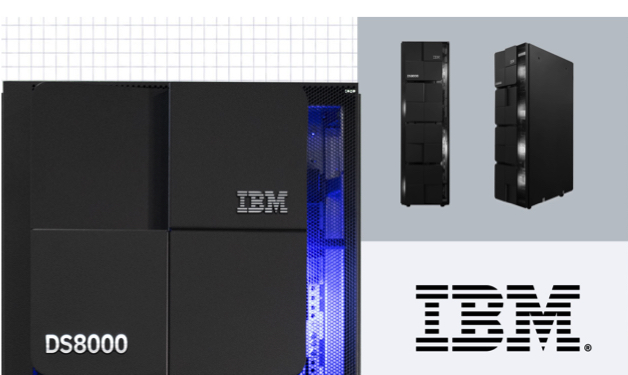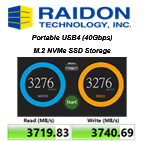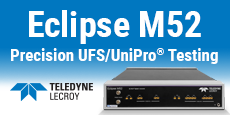Accelerating Innovation in Mainframe Storage for Next-Gen Workloads with IBM DS8000
Integrated storage solution for IBM Z
This is a Press Release edited by StorageNewsletter.com on September 19, 2024 at 2:02 pmThis blog was written on September 10, 2024 by IBM Corp.
Accelerating Innovation in Mainframe Storage for Next-Generation Workloads with the new IBM DS8000
Laying the foundation for the innovations of tomorrow
Large enterprises around the world rely on IBM Z to operate their most critical and performance-intensive applications. Industries such as finance, banking, insurance, government, aviation, healthcare, retail, and manufacturing – where security and availability are crucial – depend on IBM infrastructure. IBM Storage DS8000 plays a critical role as an integrated storage solution for IBM Z, offering comprehensive data protection, security, and business continuity capabilities.

The next-gen of Storage DS8000, generally available on October 25, 2024, is the latest innovation in enterprise-class storage for IBM Z mainframe architectures. Designed to harness the full power of IBM Z, this latest generation of Storage DS8000 is designed to provide organizations access to critical workloads, consistent and optimized data performance, and a modular architecture to adopt the latest IBM research-backed technologies to fuel business growth while monetizing data.
With the new Storage DS8000 (10th gen), businesses can expect:
Reliability and up to eight 9s availability for uninterrupted business operations
- Ensure critical business operations run smoothly without interruptions with improved reliability and higher availability of up to 99.999999%.[1]
- Achieve near real-time autonomous operational failover at metro distances, with DS8000 coupled with IBM Z’s GDPS (Geographically Dispersed Parallel Sysplex, mainframes potentially located in different locations). For distances greater than metro areas (such as remote locations or regional datacenters), organizations can return to full operations in less than an hour with GDPS and DS8000.
- Protect vs. cyber-attacks with a storage solution built to protect the very data which critical systems and AI modelshttps://www.ibm.com/topics/ai-model are built on. The DS8000 is FIPS 140-3 certified and offers immutable Safeguarded
Copies, ensuring the availability of critical data.
- Prevent data loss and recover from verified and validated points of restore with application consistent recover points using integrated systems management with IBM Z Cyber Vault.
Performance to meet the most demanding workloads
- Improve application responsiveness by providing an average of 20% improvement in latency reduction using ZHyperlink with PCIe Gen4 compared to R9 with same configuration[2], particularly in high-volume scenarios like airline and credit card transactions.
- Provide 2.5x the throughput of 48KB with PCIe Gen4 and zHyperLink for write only testing compared to previous generation[3].
- Accelerate the maximum application responsiveness providing up to 73% more IO/s for high volume transaction processing with new HPFE Gen 3 flash enclosure, compared to HPFE Gen 2 in the previous generation of DS8000[4].
Innovation and sustainability to fuel data center efficiency
- Store 2x the storage capacity in the same physical space when using IBM FlashCore Module 4https://www.ibm.com/docs/en/flashsystem-5×00/8.5.x?topic=overview-flashcore-modules compared to previous generation[5].
- Improve capacity utilization and protect critical information at bus-speed performance with inline compression and data encryption based on IBM’s industry leading computational storage – the FlashCore Module.
Cyber Resilient Mission-Critical Storage
“Cyber-resilience has become a must-have for mission-critical storage,” says Scott Sinclair, practice director with the Enterprise Strategy Group. “And, with the 10th gen of Storage DS8000, enterprises receive the integrated security features, such as secure boot and immutable safeguarded copies, combined with a boost in efficiency from the integration of NVMe technology and IBM’s FlashCore modules. IBM is delivering a platform that can support a business’s most critical workloads while also offering the efficiency for larger scale consolidation.”
Designed for Next-Gen Workload Readiness
Storage DS8000 is ready for the next gen of data intensive workloads. It can manage AI workloads while integrating with analytics tools to deliver insights and predictive capabilities.
The system is designed to give enterprises the ability to scale storage capacity to meet growing data demands to support workloads and projects as they evolve.
With IBM Z and the new DS8000, clients can optimize the performance of mainframe infrastructure, paving the way for a more agile and secured digital landscape. The company delivers an integrated cohesive solution – one end-to-end integrated stack enabled for next-gen IBM Z.
Together, IBM Z and IBM Storage offer a modern infrastructure delivering a secured, and agile platform for mission-critical workloads.
Support and availability
In mission-critical environments, every millisecond counts, and the resiliency of your IT infrastructure is paramount. That’s why having a robust infrastructure support in place is crucial. IBM Storage Expert Care provides just that. By choosing Expert Care, clients can ensure that their Storage DS8000 system receives the support it needs to operate at peak performance, minimizing the risk of unexpected downtime and data loss and maintaining high availability throughout the life of their systems.
Storage DS8000 will be generally available on October 25.
[1] Disclaimer: Based on IBM internal data. Necessary components include: IBM z15 or IBM z16, IBM middleware subsystems (CICS v5.4, IMS v15.2, MQ v9.2, Db2 v12, WebSphere, or later), supported by z/OS Parallel Sysplex, DS8000 Series storage, GDPS HyperSwap Manager (HM) and GDPS Continuous Availability (CA). A minimum of three member systems with workload-level availability and redundant components are required, with a third data center serving as a continuous availability Disaster Recovery site. IBM Middleware subsystems must be deployed with redundant regions in conformance with high availability best practices: https://www.redbooks.ibm.com/abstracts/sg248446.html. Other configurations may provide different availability characteristics.
[2] Disclaimer: Based on IBM internal data. Model based: DS8A50 Multiframe model with I/O Bay of PCI Gen4 ((16GT/s) and 1 and 4 ZHyperlinks. DS8900F Multiframe model with I/O Bay of PCI Gen3 (8GT/s) and 1 and 4 ZHyperlinks. The maximum record/control interval size for zHyperLink reads is 4K. Larger record sizes result in higher zHyperLink spin times. PCIe Gen3 operates at a data transfer rate of 8GT/s, which translates to roughly 1GB/s per PCIe lane. In comparison, PCIe Gen4 operates at 16GT/s, converting to about 2GB/s per PCIe lane.
[3] Disclaimer: Based on IBM internal data. Model based: DS8A50 Multiframe model with I/O Bay of PCI Gen4 ((16GT/s) and 4 ZHyperlinks. DS8900F Multiframe model with I/O Bay of PCI Gen3 (8 GT/s) and 4 ZHyperlinks. Based on a 12*4KB log write workload using 4 zHyperlink connections between a Z server and DS8000 10th Gen.
[4] Disclaimer: Based on IBM internal data. Measurements based on DS8000 10th Gen with HPFE Gen3 using FCM flash media and NVMe on PCIe gen4 protocol compared to DS8900F with HPFE Gen2 with standard flash media and 6Gb SAS protocol.
[5] Disclaimer: Based on IBM internal calculations of drive capacity and assuming 2:1 compression of host data on the system. The integration of IBM FlashCore Module (FCM 4) in DS8000 10th gen provides hardware compression and encryption, data reduction storage pools created from FCM will be thin provisioned.














 Subscribe to our free daily newsletter
Subscribe to our free daily newsletter


